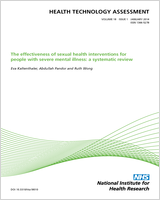NCBI Bookshelf. A service of the National Library of Medicine, National Institutes of Health.
Duarte A, Mebrahtu T, Goncalves PS, et al. Adalimumab, etanercept and ustekinumab for treating plaque psoriasis in children and young people: systematic review and economic evaluation. Southampton (UK): NIHR Journals Library; 2017 Nov. (Health Technology Assessment, No. 21.64.)

Adalimumab, etanercept and ustekinumab for treating plaque psoriasis in children and young people: systematic review and economic evaluation.
Show detailsEtanercept and ustekinumab, within their licensed indications, lead to significantly greater improvements in psoriasis symptoms than placebo at 12 weeks’ follow-up. Quality-of-life benefits were also observed. Although these effects appear to persist beyond 12 weeks, their magnitude and persistence is less certain.
Adalimumab at the licensed dose of 0.8 mg/kg (up to 40 mg) leads to significantly greater improvements in psoriasis symptoms than methotrexate for some, but not all, measures at 16 weeks. Observed quality-of-life benefits were inconsistent across different measures.
There was a lack of comparative evidence for these biologics in very young children.
With the exception of a non-significantly higher observed rate of infections among participants receiving etanercept, there was little evidence of short-term AEs. However, the relatively small number of observations and the limited length of follow-up across trials cannot exclude the possibility of rare events being undetected.
The absence of head-to-head comparisons of the three drugs meant that these treatments would have to be compared indirectly. In addition, the lack of a common comparator meant that a wider network of data from adults with psoriasis needed to be used to connect the network. This further increased the uncertainty about the relative effects of these treatments and further diminished the relative contribution of data from children to the analysis.
Based on the economic assessment, the majority of ICERs for the use of biologics in children and young people were in excess of NICE’s usual cost-effectiveness threshold and were reduced significantly only when combined assumptions that align with those in the management of psoriasis in adults were adopted.
Implications for service provision
Although two biologics are licensed for younger children with plaque psoriasis (adalimumab from age 4 years, etanercept from age 6 years), the existing randomised trials include very few young children. Consequently, evidence on the effectiveness and safety of these treatments in younger children has been generalised from observations in older children and young people.
Suggested research priorities
- With the introduction of biological treatments in the population of children and young people, continued collection of data through biological therapy registries for children and young people aged < 18 years is warranted to investigate safety, patterns of treatment switching and long-term withdrawal rates. Although randomised clinical trials are the gold standard for evidence collection, the small number of children and young people eligible for biological therapy in psoriasis hinders the feasibility of carrying out large studies in this area. Registry data would constitute a potentially more viable source of evidence to reduce the uncertainty around safety, patterns of treatment switching and long-term withdrawal rates and inform clinical practice. The collection of observational data via these registries may also contribute to quantifying the impact of biological therapy for psoriasis early in life on the prevalence of comorbidities (e.g. hypertension, obesity and depression).
- Adequately powered RCTs could substantially reduce the uncertainty surrounding the effectiveness of biological treatments in biologic-experienced populations of children and young people, that is, treatment response rates conditional on previous treatment are required. In the absence of head-to-head trials, placebo-controlled trials could facilitate NMAs.
- In particular, further evidence is needed to inform the clinical effectiveness and safety of adalimumab and etanercept in younger children.
- Further research is needed to establish the impact of biological therapies on improving the HRQoL of children and young people. Future trials should consider collecting direct estimates of EQ-5D-Y utility values. Research in this area also needs to consider whether or not the HRQoL measures capture the potential impact of any educational benefits from improved school attendance and a reduction in the prevalence of comorbidities later in life for children and young people with psoriasis (e.g. obesity, cardiovascular disease, metabolic syndrome and mental health disorders), as well as reduced spillover disutility from the illness to carers.
- There is a need for the PASI instrument and/or other tools to be validated for disease severity assessment in a population of children and young people.
- Further research is needed into the resource use and costs associated with BSC.
- Conclusions - Adalimumab, etanercept and ustekinumab for treating plaque psorias...Conclusions - Adalimumab, etanercept and ustekinumab for treating plaque psoriasis in children and young people: systematic review and economic evaluation
- Definition of the decision problem and review question - A systematic review and...Definition of the decision problem and review question - A systematic review and economic evaluation of diagnostic strategies for Lynch syndrome
- List of abbreviations - Treatment of extravasation injuries in infants and young...List of abbreviations - Treatment of extravasation injuries in infants and young children: a scoping review and survey
- Drosophila simulans eukaryotic translation initiation factor 4E1 (DsimGB2_eIF4E1...Drosophila simulans eukaryotic translation initiation factor 4E1 (DsimGB2_eIF4E1-PB) mRNA, complete cds.PopSet: 2787449604PopSet
- Validation and development of models using clinical, biochemical and ultrasound ...Validation and development of models using clinical, biochemical and ultrasound markers for predicting pre-eclampsia: an individual participant data meta-analysis
Your browsing activity is empty.
Activity recording is turned off.
See more...